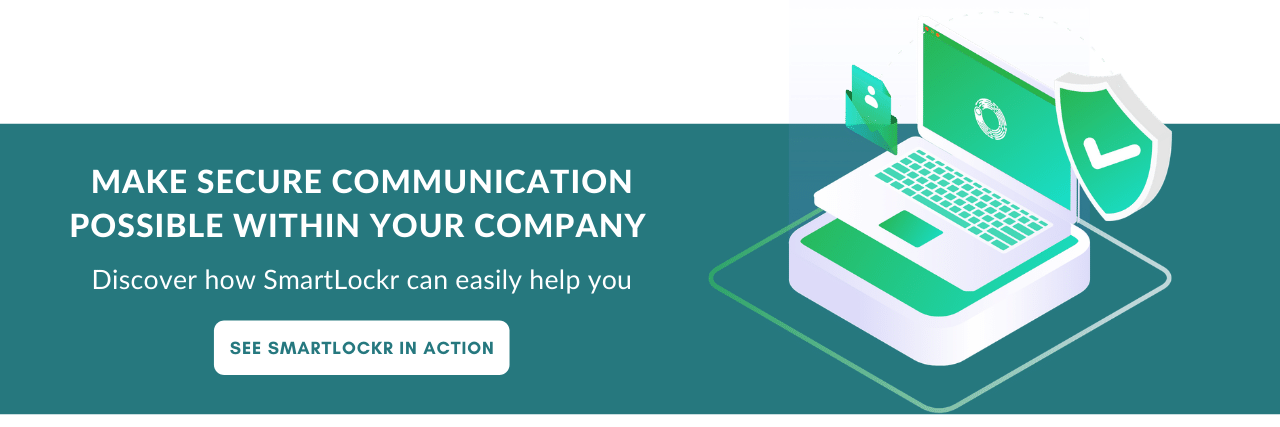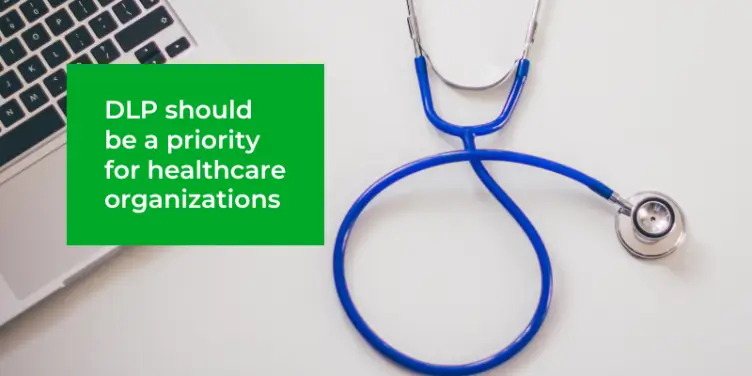Healthcare institutions are a maze of valuable private information being exchanged in whichever way, in some cases never to return again. It is what also makes the healthcare so incredibly vulnerable to data breaches: IBM's data breach report of 2021 has crowned the healthcare sector as the winner of the highest industry cost of a data breach for the 11th year in a row. The average cost per data breach? $9.23 million.
If you take into account that most of these data breaches happen because of human error, being proactive is key in preventing data breaches from happening in the first place. You better make sure to get in on a good Data Loss Prevention solution!
What is Data Loss Prevention anyway?
Ever heard of the saying ‘Defense is the best offense?’, that's what we're talking about when we're using Data Loss Prevention solutions in order to prevent data breaches. The best way to defend yourself is to build a great defense strategy against threats, including inside threats comprised of careless human error.
Data Loss Prevention (DLP) solutions are designed to protect sensitive data from being lost, abused or seen by the wrong eyes. If you've ever tried to forward an email, and you were prevented from doing so, you may have seen DLP in action!
Of course, a DLP solution isn't so simple as just being one piece of software, but having a good cybersecurity solution that allows you to deploy rules and keep track of any data going out will help a great deal.
Data can usually be found in three states, which means Data Loss Prevention solutions need to pay attention to these three states:
- Data in use: Data in use is data that is currently being used. Here you would like to control who has access to the data.
- Data in motion: Data in motion is data moving from one location to another, which could be between computers, like in emails, or through a network. This is where a DLP solution could make sure that messages are encrypted.
- Data at rest: Data that is at rest usually concerns clouds, databases or backups where data is stored. Here's where data retention policies could come into play or making sure that your cloud is protected from the CLOUD ACT.
Healthcare institutions need to comply with the law to protect private data
Private healthcare data is a goldmine of information in the wrong hands, and that makes healthcare one of the most regulated industries out there. In order to secure the privacy of their patients, healthcare institutions need to take the following laws into account:
HIPAA (US)
The Health Insurance Portability and Accountability Act, better known as HIPAA, is a US law that protects the medical records of users from being disclosed without their consent or knowledge.
If you want to make your data HIPAA-compliant, like when you're sending out emails with personal information in them, there are three rules you must consider.
- Privacy. These refer to the standards for when protected health information (PHI) may be used and disclosed.
- Security. This refers to the safeguards that must be in place to protect the confidentiality, integrity and availability of electronic protected health information (ePHI).
- Breach notification. What do you do when a data breach occurred?
GDRP (EU)
The General Data Protection Regulation, also known as GDPR, is one of the toughest privacy and security laws worldwide. The GDPR makes sure that the private healthcare data of individuals are protected throughout Europe.
Being GDPR-compliant in practice means paying attention to these rules:
- Are you allowed to process personal data?
- Inform your customers of their rights.
- Keep a record of your processing activities.
- Find out if you need to perform a Data Protection Impact Assessment (DPIA).
- If your organization is large enough, you may need a data protection officer.
- Document and report data breaches.
- Draw up a data processor agreement.
- Determine who your privacy supervisor is (in the Netherlands, this would be the DPA.)
- Design new products with privacy in mind (“privacy by design”).
- Ask permission to process data.
.webp?width=734&height=490&name=top%20view%20of%20Medicine%20doctor%20hand%20working%20with%20modern%20computer%20and%20smart%20phone%20on%20wooden%20desk%20as%20medical%20concept%20(1).webp)
Healthcare data loss can have massive consequences
Not only are data breaches expensive, with an average data breach in healthcare being significantly higher ($9.23 million) than the average data breach ($4.24 million), but they are a blight on your reputation as a company and compromise the safety and security of your patients. Keeping their data safe isn't just a matter of complying with the law, but a matter of keeping the patients themselves as safe as they are in the capable hands of healthcare providers.
These laws aren't just lip service, you know! In 2021 more than 40 million patient records have been compromised. That makes the matter of data loss in healthcare not just a matter of ‘if’ but ‘when’.
Even in January 2022 Broward Health suffered a data breach that impacted 1.3 million patients, most likely because a third-party solution they were using did not use Multi-Factor authentication.
Best practices for Data Loss Prevention in healthcare
With these laws in mind, it is incredibly important for healthcare institutions to keep track of their data. We have all been that person to forward an email to our personal email address or accidentally sent an email to the wrong person... With Data Loss Prevention solutions, that will be no more!
There are different strategies to try when implementing a DLP solution:
- A DLP-solution focused on network data loss prevention. These solutions secure network communications and check emails, chats, and could even check social media.
- A DLP-solution focused on the data center. Here you'd typically monitor the servers and databases where data has been stored.
- A DLP-solution focused on endpoint data loss prevention. The endpoint basically means the laptop or workstations that a user uses. Here you can prevent certain files from being copied over or ensure that USBs can't go inside laptops.
- Protecting data in motion. Here we're talking about emails, chats and even the network! For example, by encrypting your emails, you're making sure that while the data is moving, it's protected.
- Protecting data at rest. This is all about making sure that your laptops, mobile phones and databases are protected.
- Protecting data in use. Anything that is being used is a bit vague, but what about files that you upload? Data you copy? Or even the cloud itself that should be protected.
- Data breach detection. This monitors anything that could scope out a potential data breach, usually based on suspicious activity.
Even as you've picked your chosen strategy, we've decided on a few steps you should follow.
- Identify your data. Before you do anything, you need to know what data is being circumvented and where this data is being sent to and stored. Classify the critical pieces of personal healthcare information first and work from there.
Smartlockr allows you to know exactly what data is leaving your organization. Through our admin portal, you can monitor and log any healthcare information that goes through your organization. As soon as you see anything suspicious, you can block the emails, recipients and attachments.
- Define your content policies. Once you've decided on what data is important to your business, you need to set up some content rules. Which data can be sent publicly, which data needs encryption, and what are some of the trigger words that could cause the DLP to jump into action?
Smartlockr allows you to set up content filters for sensitive information. Think for example about mental health diagnoses, patient files and social security numbers. When your employees are sending out sensitive information, they will immediately be notified to make sure that they send out the information through end-to-end zero knowledge encryption. Simple, right?
- Manage access. Not just anyone should have access to private healthcare information. Decide on who gets to access it based on their roles and make sure that no one else gets to touch it. Less room for human error, fewer data breaches.
- Retain the information where necessary. If we look at how both HIPAA and GDPR allow users the right to view their personal information, it might be vital for you to be able to retain certain private information. In other cases, however, it pays to specify a shorter retention period.
For example, Smartlockr allows you to set up restrictions that decide how often a file containing sensitive information may be downloaded.
- Block or restrict. Naturally, it could still happen that an employee passes on sensitive information to the wrong person. In that case, you should be able to block the file or restrict an unauthorized recipient from viewing it.
Once you've sent an email with Smartlockr, it's not just possible to view the trajectory of the email and when it's been read or when a file has been downloaded, but you can also block access to files remotely. There, crisis averted.
Discover how we can help you implement a Data Loss Prevention solution!

